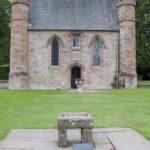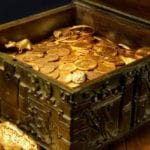 Weird Stuff
Weird Stuff  Weird Stuff
Weird Stuff  Humans
Humans The Ten Most Lethal Gunslingers of the Old West
 Misconceptions
Misconceptions 10 Phony Myths and Urban Legends That Just Won’t Die
 History
History 10 Amazing Roman Epitaphs
 Weird Stuff
Weird Stuff 10 Niche Subcultures That Are More Popular Than You Might Think
 Mysteries
Mysteries 10 Tragic Disappearances and Deaths in Joshua Tree National Park
 History
History 10 Ways Childhood Really Sucked in the Old West
 Music
Music 10 Name Origins of Famous Bands from the 1990s
 Religion
Religion 10 Biggest Turnarounds by the Catholic Church
 Weird Stuff
Weird Stuff 10 Unbelievable Times Laws Had Unintended Consequences
 Weird Stuff
Weird Stuff 10 Cool and Creepy Facts about Collecting Tears
 Humans
Humans The Ten Most Lethal Gunslingers of the Old West
 Misconceptions
Misconceptions 10 Phony Myths and Urban Legends That Just Won’t Die
Who's Behind Listverse?

Jamie Frater
Head Editor
Jamie founded Listverse due to an insatiable desire to share fascinating, obscure, and bizarre facts. He has been a guest speaker on numerous national radio and television stations and is a five time published author.
More About Us History
History 10 Amazing Roman Epitaphs
 Weird Stuff
Weird Stuff 10 Niche Subcultures That Are More Popular Than You Might Think
 Mysteries
Mysteries 10 Tragic Disappearances and Deaths in Joshua Tree National Park
 History
History 10 Ways Childhood Really Sucked in the Old West
 Music
Music 10 Name Origins of Famous Bands from the 1990s
 Religion
Religion 10 Biggest Turnarounds by the Catholic Church
 Weird Stuff
Weird Stuff 10 Unbelievable Times Laws Had Unintended Consequences
10 Hapless Sailors Who Eerily Were Lost at Sea
Hundreds of people head off to sea each day, whether for fishing jobs, military conquests, or a plethora of other reasons. However, not all sailors who head off to explore the great blue ocean return. Here are ten sailors who were eerily lost at sea.
Related: 10 Shipwrecks That Are Still Unexplained
10 John Cabot
Giovanni Caboto was an Italian sailor who was born around 1450. However, it wasn’t until around 1495 that he decided to set his sights on becoming an explorer. To help finance the trip, he headed to Spain but was unable to secure funds from the king. So after anglicizing his name to John Cabot, he journeyed to England to get the support of the British crown.
King Henry VII agreed to finance his journeys, and John Cabot set off on a successful expedition following a more northerly route than Columbus had taken just five years earlier. After 20 days, he reached land, thinking it was Asia, naming it “New Found Land” or Newfoundland. Not finding the treasures that other explorers had discovered, he did note the mass quantities of cod. He staked claim to the land in the name of the king of England and, soon after, returned to England.
A year later, on his return trip, however, John Cabot wouldn’t have quite so much success.
In about 1498, he headed off on another expedition to further chart a route departing west from Europe to Asia. And that’s the last anyone heard of him. After heading off with five ships to support his journey, no more records were made about John Cabot.
To this day, we still don’t know if John Cabot disappeared while at sea or made it to a different continent but just didn’t write about it. So, for now, he’s thought to have been lost at sea on his final adventure.[1]
9 Vasco de Ataíde
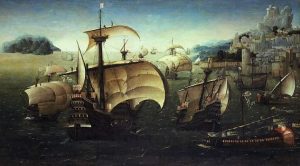
Vasco de Ataíde was a sailor from Portugal who, in 1500, joined Pedro Cabral on a trip to India. While the voyage was a success overall, poor Vasco de Ataíde never made it to his final destination.
What happened was that Ataíde was captaining one of the ships in Pedro’s fleet. The ship left Cape Verde along Africa’s west coast in late March 1500. However, that was the last that was seen of them.
Neither Ataíde nor the rest of his hundred and fifty crew members were seen again. And oddly enough, according to historical records from the time, there were no strong winds or storms that could have caused the ship trouble. To this day, it remains a mystery what happened to Vasco de Ataíde and his crew.[2]
8 Gaspar Corte-Real
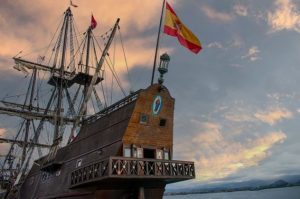
Gaspar Corte-Real was born in Portugal around 1450 and, like many other young men of his time, had a thirst for adventure and exploration. In 1500, Gaspar launched his sailing career, heading off on a voyage west from Portugal in the name of the king.
Gaspar made his way to Greenland but, unable to make a safe landing, was forced to return to Portugal. One year later, he gathered enough money and supplies to head out on a second mission to the icy continent.
Once again, he was unable to land in Greenland due to the icy terrain and ended up heading further south to Labrador. There, he captured several indigenous people, who he put in his boats to take back to Portugal.
Several months later, two of Gaspar’s three ships made it back to London. Notably absent, however, was Gaspar himself, who had been aboard the third missing ship. No one knew what had happened to Gaspar or his remaining boat, and to this day, he remains lost at sea.[3]
7 Miguel Corte-Real
If the name Corte-Real sounds familiar, that’s because Miguel Corte-Real was Gaspar Corte-Real’s brother. After his brother failed to return home from his expedition to Greenland in 1501, Miguel was distraught.
Determined to find his brother and bring him back home to safety, Miguel gathered a crew and three ships of his own. In 1502, he set off from Portugal to search for his brother.
The voyage was initially a success, and the group arrived at the landing sight of Gaspar. Armed with these new clues, the three ships decided to divide and conquer to have a better chance of finding Gaspar. The plan was to meet on August 20th to discuss their findings.
However, when the date of the rendezvous arrived, Miguel’s ship didn’t turn up. There was no trace of what had happened to the second Corte-Real brother, and he was eventually declared lost at sea.[4]
6 Diego de Nicuesa
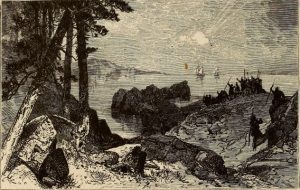
Not all imperialist explorers were from Portugal. One Spanish explorer who decided to seek his fortune by venturing off to faraway lands was a man named Diego de Nicuesa. Backed by the Spanish crown, Diego de Nicuesa headed to Santo Domingo in 1502, the first of many voyages to Latin America.
The voyage was a success, and he was commissioned several times over the next few years to head to various parts of Latin America, including Panama and Costa Rica, where he governed Spanish colonies.
In 1510, however, his luck ran out. Rebellions were brewing due to hunger and illness, and Diego de Nicuesa headed off to put down one particular uprising. When he arrived, however, the colonists were waiting for him. Instead of letting Diego within their city walls, they loaded him and seventeen crew members onto a boat and shipped them off to Santo Domingo.
Somewhere out in the open waters, however, the boat disappeared. It never made it to Santo Domingo, and neither Diego nor his crew members were ever seen again.[5]
5 Francisco de Hoces
Francisco de Hoces was a Spanish military man who, in 1526, joined the Loaísa Expedition to the Spice Isles. He was set to command a ship named the San Lesmes, which was one of seven other ships that were part of the expedition.
At first, things went well, and the fleet made its way to the Pacific Ocean. However, soon they were faced with strong gales. During one of these gales, the San Lesmes, with Francisco de Hoces aboard, disappeared.
Although no one knows for certain what happened to De Hoces or why his ship was lost at sea, it’s thought that the ship was blown as far away as Easter Island or New Zealand. Still, there’s little evidence to support this theory, and today, the general consensus is that poor Francisco was lost at sea. Part of the deadly water he traversed was later called the Drake Passage or the Mar de Hoces.[6]
4 Roche Braziliano
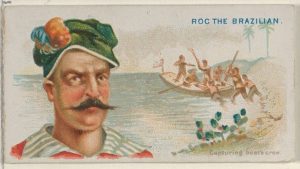
Roche Brazilano was, unlike many of the more law-abiding sailors on this list, a pirate who launched his career of crime in 1654. He was said to have been an incredibly cruel pirate who threatened to shoot down anyone who wouldn’t take a drink with him.
After a rather successful career, however, Roche Barziliano’s pirating ways came to a rather abrupt end. You see, in 1671, he and his entire crew simply vanished.
What’s stranger still is that there are no records about what might have happened to Roche. So today, there’s still much speculation as to whether the ship capsized, was captured, or suffered some other fate. For now, this sailor remains lost at sea.[7]
3 Dirk de Lange
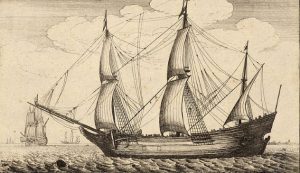
Dirk de Lange was the captain of a ship called the Ridderschap van Holland. The Ridderschap van Holland was a merchant ship designed to trade in the East Indies. While most of its sailing career was successful, there was one fated voyage, however, that led to the disappearance of the ship, its captain, and its crew.
In 1694, Dirk de Lange, his crew, and his trusty ship sailed for Indonesia on the boat’s fifth voyage. They managed to land at Cape Good Hope for a short period of time before continuing on their journey to Indonesia. However, after departing the cape, the ship was never seen again.
With no trace of the ship or what had happened to her and her crew, Dirk de Lange was declared lost at sea. Today, some historians speculate that the crew was captured by pirates. Others suspect that poor Dirk capsized off the coast of Western Australia. Either way, the seamen and their effects have yet to be found.[8]
2 John Coxon
John Coxon was a pirate who dedicated his life to terrorizing the town of Santa Marta, Colombia, in the Caribbean. It’s thought that he started operations around 1677 and spent much of his life plundering and pillaging the area.
At least, he did until around 1688. In 1688, after receiving a pardon from Jamaican authorities, John Coxon simply vanished. No one knows what happened to Coxon or his ship, despite years of attempting to track down clues.
The only clue about what may have happened to poor John is an account left by some of his crew members. The crew members cited Coxon’s ship as being extremely heavy, so perhaps the captain and his boat went down due to the weight.[9]
1 Michel de Grammont
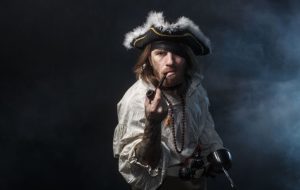
Michel de Grammont was born around 1645 in Paris and originally started life as a nobleman. However, after killing his sister’s would-be-lover, he fell out of favor with the court and was forced to turn to a new profession. He chose pirating as his new trade and set sail in 1670 on a ship called Hardi.
During his conquests, Michel de Grammont made his way around a number of Spanish forts, including Trujillo, Gibraltar, La Guaira, Cumana, Veracruz, and Puerto Cabello.
He made numerous conquests throughout his career, but in 1686, his pirating days came to an end. In April that year, he set off for a raid with a fellow French pirate named Nicolas Briguat. When Brigaut was caught, he sent word for Grammont to come and rescue him.
However, Grammont’s rescue mission never arrived. It turned out that he’d been caught in a storm along the way, and he and his crew had disappeared for good.[10]


